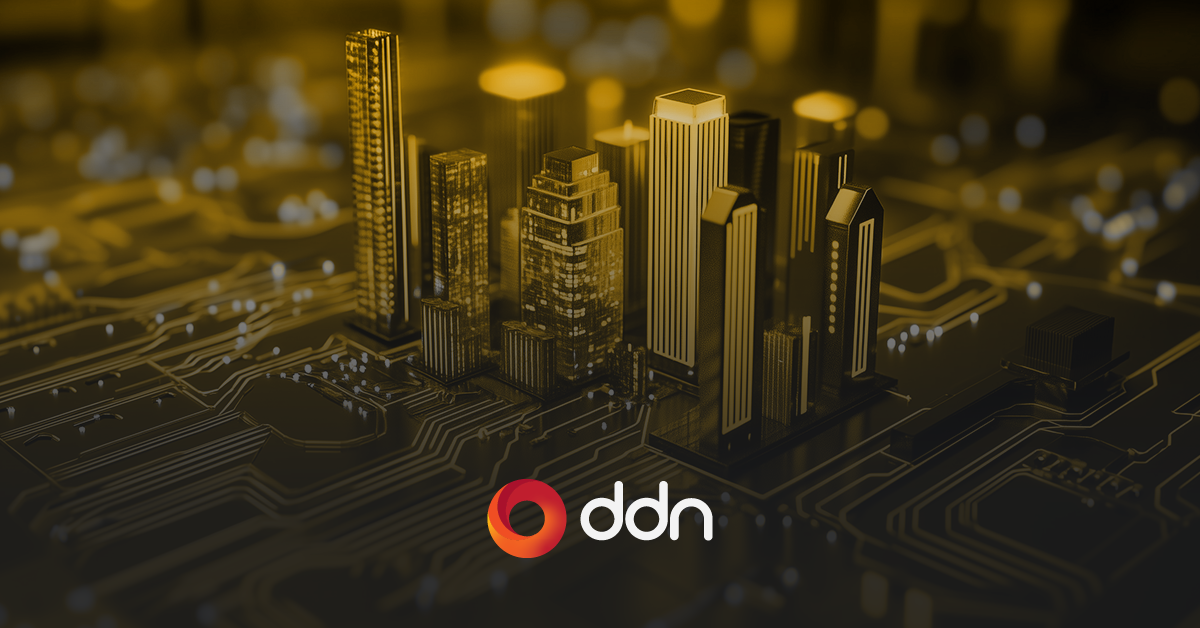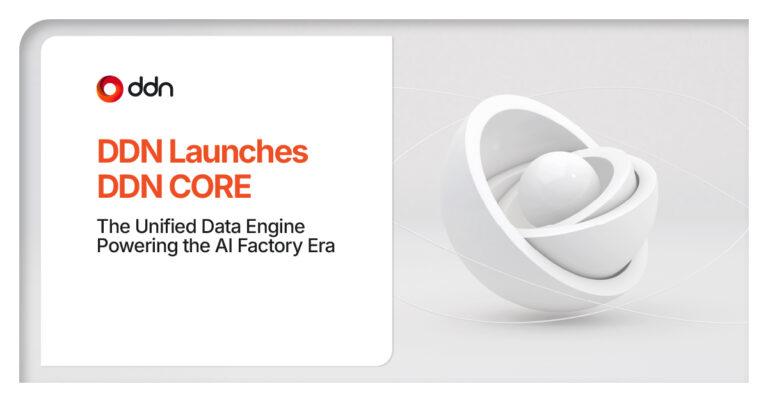As enterprise AI shifts from pilot programs to full-scale adoption, the infrastructure that underpins it is under greater scrutiny than ever. Data-intensive workloads like Retrieval-Augmented Generation (RAG), inference, real-time analytics, and autonomous systems are pushing legacy storage architectures to their limits.
NVIDIA’s AI Data Platform has kicked off a new era of intelligent infrastructure, AI-native data platforms designed to unlock enterprise-scale AI. One of the latest entries into this space is DDN Enterprise AI HyperPOD, a new solution announced by DDN, built by Supermicro and accelerated by NVIDIA. HyperPOD is part of a broader movement to rethink how data systems serve AI workloads, especially in enterprises dealing with massive, complex, and distributed datasets.
Why Traditional Storage Is Holding Back AI
Enterprises are facing an explosion in data and specifically, AI workloads like generative AI models are not inherently designed to interact with this type of information, particularly when it’s locked in siloed storage platforms across edge, core, and cloud environments.
AI pipelines demand real-time or near-real-time access to high volumes of data. But traditional enterprise infrastructure, designed for backup, file sharing, or transactional systems, is often too slow, too fragmented, and too rigid to meet this need.
According to recent research conducted by DDN,
- 99% of IT leaders report inefficiencies in their AI workloads
- 54% have delayed or canceled AI projects in the past two years.
The cause? Infrastructure not designed for AI data pipelines.
Common pain points include:
- Latency: Slow data access times kill GPU efficiency, especially in inference and training loops.
- Metadata handling: Many AI platforms struggle to tag, search, and classify metadata at scale.
- Integration: Existing storage platforms often lack the APIs, data formats, and control planes that modern AI frameworks expect.
- Scalability: Enterprises need to span cloud, edge, and on-prem environments, without duplicating data or managing disjointed systems.
This has created an urgent need for platforms built natively for AI, able to feed models at high throughput, support dynamic workloads, and evolve with the fast-changing AI software stack.
What Is the DDN Enterprise AI HyperPOD?
HyperPOD is a turnkey AI-Ready data platform built on DDN Infinia, Supermicro systems, and accelerated by NVIDIA’s latest AI software and networking technologies. Rather than positioning itself as just a storage product or a GPU server rack, HyperPOD is a pre-integrated data infrastructure layer optimized for:
- AI inference
- Retrieval-Augmented Generation (RAG)
- Agent-based systems
- Large-scale vector search
- Metadata-intensive workloads
- Continuous ingestion and real-time querying of enterprise data
It combines compute (NVIDIA GPUs), storage (DDN Infinia), and networking (NVIDIA Spectrum-X and ConnectX) into a tightly optimized stack. HyperPOD is also pre-integrated with NVIDIA’s NeMo Retriever, NVIDIA NIM, and other components of NVIDIA AI Enterprise software, streamlining deployment of intelligent applications across industries.
This full-stack approach is essential: AI workloads are no longer discrete stages (train, test, deploy), but continuous loops of ingestion, indexing, inference, and refinement. HyperPOD is designed to support this full AI data lifecycle with minimal complexity.
Architectural Innovations That Redefine Enterprise AI
While the announcement focuses on the platform’s integrations and partnerships, a deeper look at the underlying architecture reveals some notable innovations:
- DDN Infinia at the Core: Infinia provides a software-defined, multi-tenant object storage layer built for low-latency metadata access and massive parallelism. It’s already deployed in environments with over 200,000 GPUs.
- Optimized for RAG and Semantic Search: HyperPOD supports continuous embedding, vector indexing, and semantic search over enterprise data. NVIDIA NeMo Retriever enables instant searchability of PDFs, images, chat logs, and more—turning unstructured data into accessible knowledge.
- Zero Data Movement: Traditional AI pipelines often require copying datasets into separate silos. HyperPOD brings AI compute to the data, enabling near real-time insights without redundant data operations.
- GPU-Aware I/O Paths: In AI workloads, it’s not just about storage size—it’s about feeding GPUs efficiently. HyperPOD leverages DDN’s low-latency object handling to improve model loading times, checkpointing speed, and throughput to NVIDIA’s latest architectures (like H100 and Blackwell GPUs).
- Enterprise-Ready: Features like RBAC, immutable object locking, real-time telemetry, and stretched cluster support ensure that HyperPOD meets the governance, compliance, and high-availability requirements of regulated industries.
How HyperPOD Aligns with NVIDIA’s AI Data Platform Vision
HyperPOD isn’t just a DDN initiative, it aligns with NVIDIA’s AI Data Platform reference design. NVIDIA’s vision is to enable a new kind of infrastructure that connects intelligent agents directly to enterprise data stores.
The idea is simple but powerful: make the enterprise’s unstructured data instantly useful for AI, without needing to copy, reformat, or rearchitect it. In this model, data lives where it’s generated, on-prem, at the edge, or in cloud, and is made AI-accessible through a smart data plane that includes:
- Continuous embedding and indexing
- Semantic vector search
- Real-time metadata query
- Agentic AI (via NeMo or other LLMs) that can “reason” over this data
HyperPOD is a concrete instantiation of this vision, providing a platform where the data layer, the compute layer, and the AI agent layer are all co-designed to deliver real-time business insights.
Who HyperPOD Is Built For
HyperPOD is ideal for organizations that:
- Operate in regulated industries where data cannot be moved to public cloud for privacy or compliance reasons (e.g., healthcare, finance, public sector)
- Have large existing unstructured data stores and want to make them accessible to AI without re-architecting everything
- Need low-latency, high-throughput access to multimodal data (text, image, video, logs)
- Are deploying agentic or RAG-based AI systems, either for internal productivity or customer-facing use cases
While still early in its rollout, HyperPOD’s architecture suggests promising applicability across a wide set of verticals:
- Healthcare & Life Sciences: Accelerating drug discovery and genomic analysis by enabling fast search and interpretation of protein databases, scientific papers, and trial data.
- Manufacturing & Industrial: Enabling predictive maintenance and real-time defect detection by embedding and searching image/video data from factories.
- Financial Services: Powering HFT and AI advisors and real-time compliance engines by unlocking value from contracts, emails, transcripts, and market data.
- Public Sector & Defense: Enhancing decision-making by transforming large surveillance, geospatial, and intelligence data lakes into searchable knowledge bases.
The Rise of AI-Native Infrastructure
HyperPOD is part of a broader trend where AI infrastructure is becoming AI-native rather than retrofitted. The key insight driving platforms like HyperPOD is that data, not compute, is the new bottleneck — and solving that requires a rethink at every level of the stack.
Enterprises are feeling this pressure firsthand:
- 99% of IT and business leaders report inefficiencies in their AI workloads.
- 65% say their environments are already too complex to manage, and
- 54% have delayed or canceled AI projects in the past two years because their infrastructure couldn’t keep up.
Rather than buying compute, storage, and networking separately and hoping they play nicely together, enterprises are increasingly looking for pre-integrated, validated platforms that reduce friction, accelerate time to insight, and scale with AI demands.
Yet while many platforms claim to be “AI-ready,” only 38% of enterprises say they have unified access to their data — a critical gap that leaves models underfed and infrastructure underutilized. 65% of infrastructure sits idle, wasting energy and budget.
HyperPOD, built on the shoulders of proven technologies like Infinia and NVIDIA AI Enterprise, is designed to fix these inefficiencies at the source. It’s co-designed with NVIDIA, tested on real-world, hyperscale AI workloads, and optimized for the actual patterns of modern AI — from RAG to inference to agentic systems. It may well signal the new standard for enterprise AI data infrastructure.
To learn more about how HyperPOD can transform your organization’s AI performance, visit our website or contact us to speak with an AI infrastructure expert.
A turnkey AI-native data platform combining DDN Infinia, NVIDIA GPUs, and Supermicro systems for enterprise AI workloads like RAG, inference, and agentic systems.
It eliminates data bottlenecks by delivering high-throughput, low-latency data access, enabling continuous ingestion, training, and inference.
Unlike retrofitted systems, it’s co-designed with NVIDIA to support modern AI pipelines and real-time data intelligence.
Enterprises in regulated or data-intensive sectors—like finance, healthcare, and manufacturing—that need AI-ready infrastructure without compromising governance or performance.



